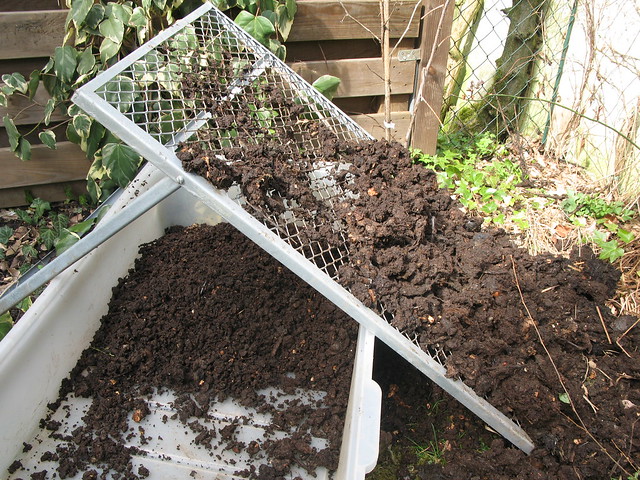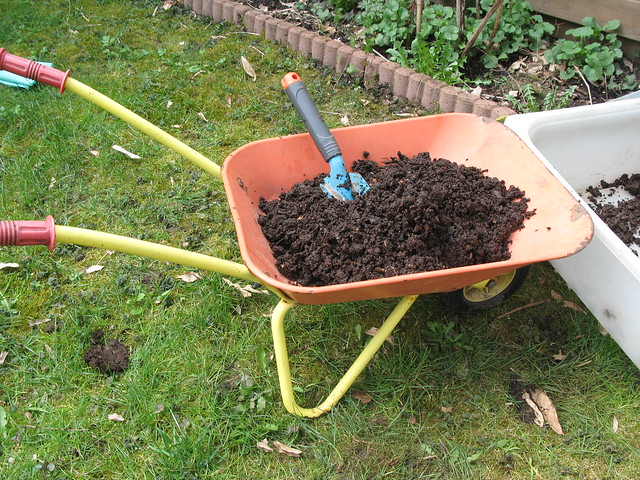- Attitudes and behaviours
- Wikipedia
- Discussions about specific Wikipedia articles
- Much improved Wikipedia page on composting toilets
Much improved Wikipedia page on composting toilets
20.8k views
- erkkisantala
-
Less
- Posts: 14
- Karma: 1
- Likes received: 6
you raised a question whether there is some information available on the quantity of composting toilets in Finland. No real statistics exist but we made some estimates together with experts in the commercial sector and the Global Dry Toilet Association of Finland.
We estimate that about 4% of the single family homes in sparsely settled areas not connected to any public sewer network are equipped with a composting toilet. It may be the only toilet in the house or a second one when there is also a WC available.
In holiday homes composting toilets, as well as other types of dry toilets, are more common. Our estimate is that there are almost 200 000 composting toilets serving holiday homes. This amount includes only commercial models, both simple ones and more sophisticated models. In addition, there are at least same amount of other types of dry toilets serving holiday homes. The simple ones are not placed inside the house but in a separate toilet hut.
The issue of dry toilets in general is actual in many ways just now. For instance, a new guidance publication (16 pages, only in Finnish) will be published soon, aimed to enhance the knowledge among architects, civil engineers and construction companies concerning toilet alternatives.
Greetings,
Erkki
Please Log in to join the conversation.
You need to login to reply- Ainomaija
-

- Environmental engineer & finalizing MSc studies in Environmental Health Science. Have worked for projects in ecosan for 3-4 years (Finland and Ethiopia). Member in the ISO group updating management guidelines for domestic wastewater services.
Less- Posts: 3
- Likes received: 3
The Wikipedia text looks really comprehensive and understandable, this is really great as the topic still seems to be difficult to comprehend for the greater public and now the information is updated as well.
I would mofidy the ISO text accordingly (new suggestions below from a TC224/WG8 group member's point of view):
---
The International Organization for Standardization (ISO) is currently preparing a "management standard" which is in a draft state as ISO 24521, currently under the heading "Activities relating to drinking water and wastewater services — Guidelines for the management of basic onsite domestic wastewater services". The new standard is meant to be used in conjuction with ISO 24511 standard. More than conventional wastewater it will deal with toilets (including composting toilets) and toilet waste. The guidelines are applicable with privately or publically owned and/or operated basic wastewater systems and include the aspects of the whole life span of domestic wastewater such as planning, usability, operation & maintenance, disposal, reuse and health.
The most applicable reference to this: www.iso.org/iso/catalogue_detail.htm?csnumber=64679
---
You are free to modify the text onwards if needed.
Also, I read the text about Finland and it has still few mistakes concerning the manufacturer's: Lassila & Tikanoja sold their operations to Kekkilä and Suomen Clivus is not operating currently as I am aware of the issue. Also there are few more that are not mentioned.
New amended suggestion below concerning Finland:
--
Numerous sparsely settled villages in rural areas in Finland are not connected to municipal water supply or sewer networks and the house owners must themselves take care of their own systems. Individual private wells, i.e. shallow dug wells or boreholes in the bedrock, are often used for water supply, and several house owners have opted for composting toilets. In addition, composting toilets are common at holiday homes, located often near sensitive water bodies. These are the reasons why there are many Finnish manufacturers of composting toilets, for example the companies Biolan, Ekolet, Kekkilä, Pikkuvihreä and Raita Environment.
references:
16] (as already exists) and "The Finnish Dry toilets" leaflet from 2011:
www.huussi.net/wp-content/uploads/2013/0...2011_web_spreads.pdf
and webpage (if needed): www.huussi.net/en/association/members-and-supporters/
---
I hope this helps a bit forward.
I hope we get information about Sweden to the Wikipedia site as well at some point
best regards,
Aino-Maija Kyykoski
This email address is being protected from spambots. You need JavaScript enabled to view it.
Finland
Please Log in to join the conversation.
You need to login to replyThanks!
Founding Member of Water-Wise Vermont (formerly Vermonters Against Toxic Sludge)
Please Log in to join the conversation.
You need to login to reply- Ecowaters
-
 Less
Less- Posts: 62
- Karma: 1
- Likes received: 9
I see many of the terms I used still there, many based on the factsheet on composting toilets I wrote with David Del Porto for EPA in 1999.
There are errors now, such as the composting toilet standard in the United States. Also, there are water-flush composting toilets.
carol-steinfeld.com (personal)
www.ecotoilets.org (soon)
ecotechproducts.net
Please Log in to join the conversation.
You need to login to reply- joeturner
-
 Less
Less- Posts: 717
- Karma: 23
- Likes received: 185
From memory, I think he looked at ascaris survival.
+++++++++++++++++++
Note by moderator:
I copied the reply of myself (Elisabeth) here because I had to split up my post that dealt with two topics and I moved one part of my other post to here about the Earth Auger toilet in Ecuador.
And Joe:
I had a browse of that PhD thesis that you linked to. Looks like an excellent piece of work (it is now also in the SuSanA library here: www.susana.org/en/resources/library/details/2138).
As I suspected, he looked at Ascaris but he had to spike the samples with Ascaris eggs that he had bought, as most likely none would have been present in the faeces of the American users.
Therefore, I am wondering if what I wrote in the Wikipedia article is fair to say, i.e.:
The slow composting toilets utilized in the backcountry of Vermont, USA, are left untouched (once full) for up to three years before they are emptied (less if red worms are employed). However, this would still not be sufficient to kill off helminth eggs, such as Ascaris lumbricoides. As helminth infections are however not common in the population of the U.S. this is not an important problem.
Please Log in to join the conversation.
You need to login to reply- Elisabeth
-
Topic Author
- User is blocked
- Freelance consultant since 2012
Less- Posts: 3372
- Karma: 54
- Likes received: 932
Re: Much improved Wikipedia page on composting toilets
I thought I should give you an update on the improvements of the Wikipedia page on composting toilets (en.wikipedia.org/wiki/Composting_toilet). I am not an expert on composting toilets, so I am very happy to have recieved some inputs from Erkka (Finland), Wolfgang (Germany) and Kai (USA) which we have been able to use on the Wikipedia page.
You can see from this history page (en.wikipedia.org/w/index.php?title=Compo...oilet&action=history) that we have had a few editors of this page recently, and I am very grateful to Kai in particular for working on this page with me (that's Kai Mikkel Førlie from Vermonters Against Toxic Sludge, not Kai Udert).
But it would still be good to get more contributions because the page is far from perfect and still needs quite a bit more work.
To show you some recent edits that we made (and give you a chance to comment on them, perhaps you disagree with them?):
A new section on low temperature composting toilets, which are called moldering toilets in the US:
en.wikipedia.org/wiki/Composting_toilet#...2C_moldering_toilets
Slow composting toilets, moldering toilets[edit source | editbeta]
In slow composting toilets (also referred to as "moldering toilets" or "moldering privies" in the U.S.), the temperatures that are achieved are not high enough to destroy pathogens. Slow composting or cold composting happens in most of the composting toilets, because the heap is built up step by step and not at once, regarding humidity, carbon to nitrogen ratio and other process parameters. So a second composting is normally necessary to destroy e.g. potential helminth eggs. Nevertheless, slow composting toilets are composting toilets, as "composting" in English means decompostion in general.
Such composting toilets are usually designed for modest and often seasonal use and employ a more "passive" approach to the composting process (rather than a more actively managed approach) like those that serve remote trail and hiking networks. Mouldering toilets are typically designed and constructed such that the materials deposited can, at a certain point, be isolated or segregated from the operational portion of the toilet (or the entire toilet itself can be closed-off from use) in order to undergo low temperature mesophilic composting.[4] Slow composting toilets rely either solely on long retention times for pathogen reduction and to fully decompose excreta or on the combination of time and the addition of red wriggler worms for vermi-composting.[4] The slow composting toilets utilized in the backcountry of Vermont, USA, are left untouched (once full) for up to three years before they are emptied (less if red worms are employed). However, this would still not be sufficient to kill off helminth eggs, such as Ascaris lumbricoides. As helminth infections are however not common in the population of the U.S. this is not an important problem.
Is it fair to say that destruction of helminth eggs is not an issue in the U.S. as hardly anyone there is infected by them anyhow?
And is this a good reference to cite or can you proposed some better ones to me:
Appalachian Trail Conservancy (2014). Backcountry Sanitation Manual, 2nd Edition. Appalachian Trail Conservancy, Green Mountain Club, USDA Forest Service, National Park Service, USA
www.susana.org/en/resources/library/details/2130
It was found by Kai and it looks rather comprehensive but if anyone else can suggest further important references to cite, then please let me know. They should be in English though (sorry, Wolfgang, would love to cite your book but it is only in German so far... (and Russian))
Then we added this part (it came from Erkka - would be good to expand on this and to provide a reference):
en.wikipedia.org/wiki/Composting_toilet#...ardization_.28ISO.29
International Organization for Standardization (ISO)[edit source | editbeta]
The International Organization for Standardization (ISO) is currently preparing a "management standard" under the heading "Onsite management of domestic wastewater using low technologies". More than conventional wastewater it will deal with toilets (including composting toilets) and toilet waste.
Can anyone provide more inforation on this aspect?
I have also added information about the situation in Finland (based on inputs from Erkka):
Finland[edit source | editbeta]
Numerous sparsely settled villages in rural areas in Finland are not connected to municipal water supply or sewer networks and the house owners must themselves take care of their own systems. Individual private wells, i.e. shallow dug wells or boreholes in the bedrock, are often used for water supply, and several house owners have opted for composting toilets. In addition, composting toilets are common at holiday homes, located often near sensitive water bodies. These are the reasons why there are many Finnish manufacturers of composting toilets, for example the companies Biolan, Lassila & Tikanoja, Pikkuvihreä, Raita Environment and Suomen Clivus.[10]
Finland strikes me as such a leader in composting toilets, it would be great to add more quantitative information, i.e. what fraction of the population in the sparsely settled villages uses composting toilets. I suspect a lot of the information is only available in Finish and not in English, but perhaps Erkka or others can provide key pieces of information in English for the Wikipedia page.
And I have added information about the Earth Auger toilets from Ecuador that we discussed elsehwere on the forum (forum.susana.org/forum/categories/106-us...on-in-terris-ecuador) *
en.wikipedia.org/w/index.php?title=Composting_toilet#Ecuador
Ecuador[edit source | editbeta]
Earth Auger composting toilet (prototype)
The NGO "Fundación in Terris" is installing composting toilets with urine diversion in Ecuador called "Earth Auger toilets".[11] This composting toilet has a mechanised, foot-pedal-actuated dry-flush system and sawdust delivery system. When the pedal is operated the feces, cleansing paper and automatically added sawdust are mechanically processed through a pipe with an auger inside, which mixes, aerates and moves them through a composting chamber to storage (e.g., buckets). In storage it is detained for an additional 1-5 months (depending upon number of users) for compost stability and pathogen kill prior to being used as a soil amendment. Direct handling of excreta by the user is thus not required as the whole process is pedal-operated until harvest. The urine is harvested separately in hose-connected containers, or mixed with wash water and used in a greywater system. The toilets differ in price and number of accessories: in mass production the different units are expected to cost between US$150 and US$ 300.[11]
650 injection molded Earth Auger toilets designed and manufactured by Critical Practices LLC from Washington State, U.S., have in 2014 been installed in Ecuador, under a project co-funded by the Bill & Melinda Gates Foundation.
Chuck and Marcos, could you please check this text and modify it if needed (ideally directly in the Wikipedia page).
I have used the photo below because I had it easily available but it is perhaps not ideal. Could you propose a better one for the Wikipedia article?

I hope that with this post, I have been able to:
- Get a few of you interested to contribute your wisdom to this Wikipedia article (or even just your watchful eyes if you spot any typos!)
- Give you an idea how information that has been posted on this forum can be captured also in Wikipedia to provide added benefits for a forum post.
Elisabeth
* Edit on 5 March 2015: On second thoughts, I removed the example of the Earth Auger toilets from the composting toilet page on Wikipedia as I felt that it was too "researchy" and not yet established in large enough numbers to justfy this information. Perhaps later. But it may fit better as an example on the UDDT page, not the composting toilet page.
Freelance consultant on environmental and climate projects
Please Log in to join the conversation.
You need to login to reply- Elisabeth
-
Topic Author
- User is blocked
- Freelance consultant since 2012
Less- Posts: 3372
- Karma: 54
- Likes received: 932
Re: Much improved Wikipedia page on composting toilets
As for my own gardening composting efforts... I have to admit I am not on a mission to get it optimal, I am just happy when it doesn't smell (it doesn't) and when I can use it in my small garden after 1-2 years (not growing any crops with it, only some berry bushes; they are thriving, could also be the urine their soil is getting from time to time).
Here is what it looks like when I sieve the compost:

and here in our little wheel barrow:

To optimise it, I should probably add more carbon-rich material (I thought leaves where carbon-rich, but you pointed out their are nitrogen rich, too). I couldn't really be bothered to go and get something carbon-rich specifically for the composter, as I use it more as a waste disposal mechanism, therefore I add what are waste products for me: dried faeces, toilet paper (this should be rich in carbon!), kitchen waste, leaves and grass clippings.
Freelance consultant on environmental and climate projects
Please Log in to join the conversation.
You need to login to reply- joeturner
-
 Less
Less- Posts: 717
- Karma: 23
- Likes received: 185
Yes, I think what you are describing is a form of faecal compost. In order to produce something that resembles compost, there usually has to be a significant amount of carbon rich material added to the faeces - so that the C:N ratio is something like 25:1 or lower. Garden waste and kitchen waste can have a high amount of N, but I'm not sure what is happening when you add it to dehydrated faeces - I'd guess much of the nitrogen might have already been driven off before you add it.
What is it like at the bottom of your bin? Are the particles recognisable as faeces or plant waste? Is it brown and sticky or does it feel a bit like compost sold in bags?
If it has properly composted, this is probably a sign that you have the C:N ratio about right.
Please Log in to join the conversation.
You need to login to reply- Elisabeth
-
Topic Author
- User is blocked
- Freelance consultant since 2012
Less- Posts: 3372
- Karma: 54
- Likes received: 932
Re: Much improved Wikipedia page on composting toilets
Which characteristics do you think would be affected when you say:
the resulting compost produced when co-composted with plant residues will have different characteristics than composts produced from other materials
Do you perhaps mean the nitrogen to carbon ratio? It is my understand that composting faecal matter on its own is not advisable, as there is too much nitrogen in there compared to the carbon content. Hence the advice to add carbon-rich material also for bulking purposes.
I think in practice people who have a composting toilet would always mix kitchen waste and garden waste with it. Or mind you: when the composting chamber is below the toilet, it's not so easy to do that (fruit waste could lead to fruit flies coming out of the toilet seat). Maybe the method of choice there is to do basic composting in the toilet vault and then when you transfer the material to your garden composter, then you mix it with garden waste and organic kitchen waste.
That's how I do it with my dry toilet (which is not a composting toilet at all, just a urine diverting dry toilet from Separett), where I add the dried faeces and toilet paper (about every 4-6 weeks) to my composter in the garden which also gets leaves, grass clippings and organic kitchen waste. I guess that makes it a faecal compost or not? Is it a "significant amount of faeces"?
At the beginning it looks like this (composter from the top):

At the end it looks like this when I remove the compost (this compost bin was actually too densely packed I think):

Freelance consultant on environmental and climate projects
Please Log in to join the conversation.
You need to login to reply- joeturner
-
 Less
Less- Posts: 717
- Karma: 23
- Likes received: 185
www.sswm.info/category/implementation-to...-agriculture/use-com
I'm not sure how to say this in a useful way on a wikipedia page.
Please Log in to join the conversation.
You need to login to reply- joeturner
-
 Less
Less- Posts: 717
- Karma: 23
- Likes received: 185
If it was by far mostly vegetable/plant waste with very occasional faeces, I don't think I would call that faeces compost (although I do remember there being a discussion about whether grass cuttings collected for compost should be considered to be faecal compost if it contained some dog faeces.. I'm not sure what happened about that).
I don't think it is possible to generalise about composts, the effect of them as a soil amendment will depend entirely on the 'ingredients' in the compost. Even if all pathogens have been destroyed in the faeces, the resulting compost produced when co-composted with plant residues will have different characteristics than composts produced from other materials.
So I think there are two issues: first possible routes of infection from faecal compost - so it might say something about the kinds of crops to use it on (non-food ideally) and the advisability of using it in close proximity to homesteads.
The second issue is about the characteristics of the material itself. I will try to find a source which discusses this point in more detail.
Please Log in to join the conversation.
You need to login to reply- Elisabeth
-
Topic Author
- User is blocked
- Freelance consultant since 2012
Less- Posts: 3372
- Karma: 54
- Likes received: 932
Re: Much improved Wikipedia page on composting toilets
You know more about compost than I do: what is the official definition of "faecal compost"? If the input material contains any human or animal excreta in any amount, does it make it "faecal compost"?
So when there is animal manure added, or compost made from sewage sludge, or compost from composting toilets - these are all "faecal composts"?
And isn't the only difference compared to "non-faecal compost" that there could be remains of undestroyed pathogens (in particular helminth eggs, if the humans or animals whose excreta was used are infected with helminth eggs), but all the other physical-chemical and biological properties of the compost are in principle the same, i.e. those that make it into a good soil amendment?
Therefore which uses of compost should be advised against if faecal matter was part of the input?
The Wikipedia page on Uses of composts lists these (en.wikipedia.org/wiki/Uses_of_compost):
1 Agriculture
2 Horticulture
3 Erosion control
4 Special uses
I can easily make the necessary amendments to the page to make it clearer and better, once I understand the issues better.
Regards,
Elisabeth
Freelance consultant on environmental and climate projects
Please Log in to join the conversation.
You need to login to reply- Attitudes and behaviours
- Wikipedia
- Discussions about specific Wikipedia articles
- Much improved Wikipedia page on composting toilets







